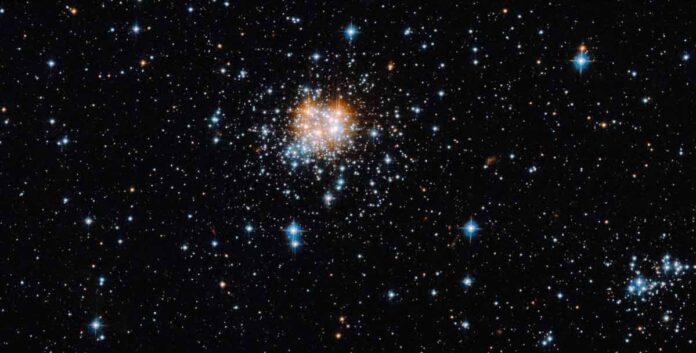The center of NGC 2002 is dominated by a twinkling cluster of stars. It is an open star cluster located approximately 160,000 light-years from Earth in the Large Magellanic Cloud. The Large Magellanic Cloud is a satellite galaxy of our Milky Way with numerous star-forming regions. NGC 2002 has a diameter of about 30 light-years and is only about 18 million years old.
The Large and Small Magellanic Clouds (LMC and SMC) are dense with young star clusters. This is why they are ideal laboratories for studying stellar formation and evolution. The LMC and SMC are the only systems that contain star clusters at all stages of evolution. They are also close enough to Earth to be fully resolved. This means that individual stars can be identified and studied.
NGC 2002 has a more spherical shape than a typical open cluster. It also has a low star density and an irregular shape due to the weak mutual gravitational attraction of its constituent stars. Individual stars in an open cluster can usually be seen. Whereas stars in a globular cluster which is the other main type of cluster, are frequently too dense to see even with powerful telescopes. NGC 2002 was studied using Hubble’s high resolution and sensitivity in discerning individual stars.
NGC 2002 contains approximately 1,100 stars. As the cluster evolves, the more massive stars sink inwards towards the center. And the lighter stars move away from it. Five red supergiants can be seen in the cluster’s center. These supergiants are physically massive but cooler stars that are fusing helium after exhausting their hydrogen fuel.

